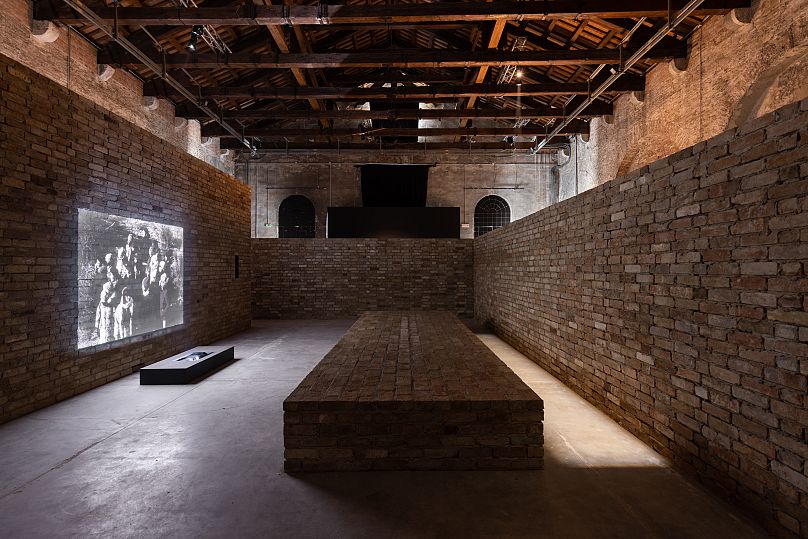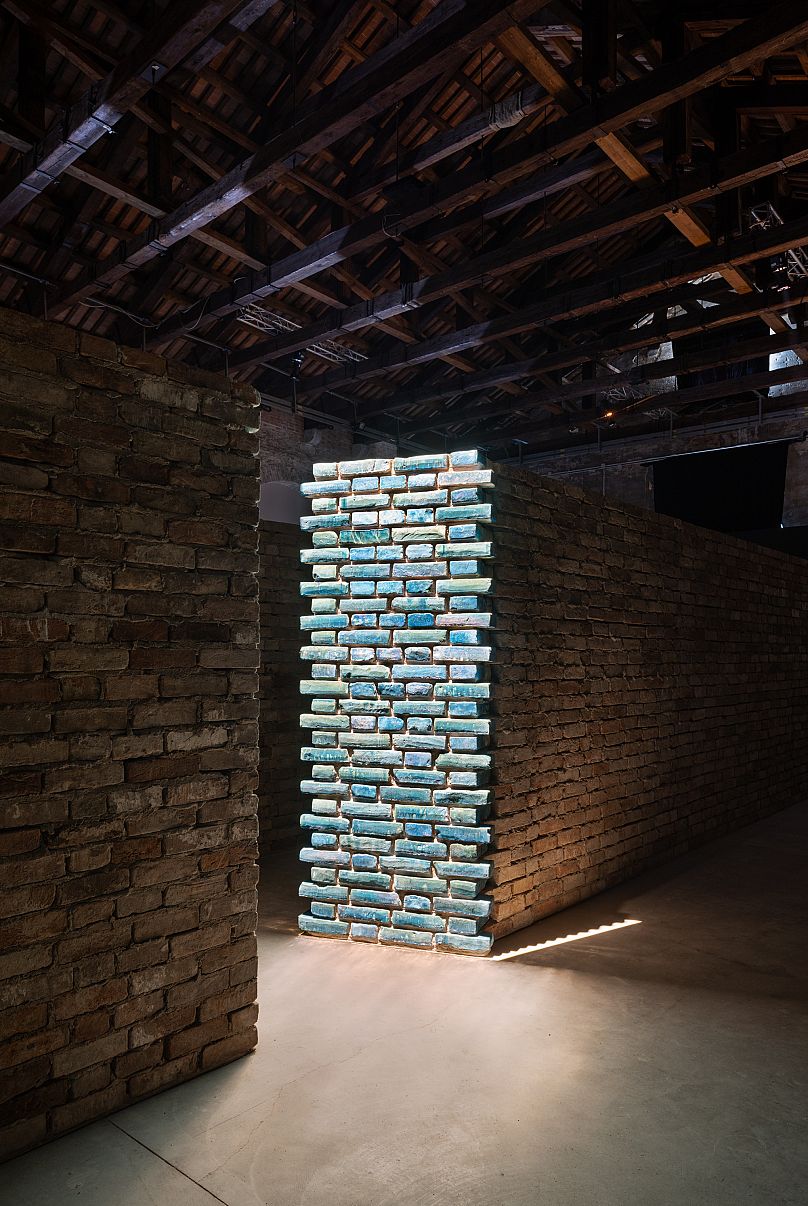As the curtain was about to fall once more on the 18th Venice Architecture Biennale, university students behind one of the main pavilions had the chance to see their creations in plain view.
The Uzbekistan National Pavilion was created by young architects of the Ajou University in Tashkent in partnership with the designers from the French Studio KO.
Titled ‘Unbuild Together: Archaism vs. Modernity’, it was commissioned by the Uzbekistan Art and Culture Development Foundation and centers on Uzbekistan’s lesser-known ancient past.
The work is inspired by the ruins of 300 ancient desert fortresses from the Ancient Khorezm, known as qalas, that span the Karakalpakstan Region. They date back to the 1st century BC. Despite their age, remarkably 50 fortresses remain.
In order to build the design, a group of 25 students was taken to see the qalas first-hand, visiting some of the best-preserved sites such as Toprak Qala and Koi Krylgan Qala. The group also visited Bukhara, where its stunning brickwork and blue-hued tiles have been mastered over centuries.
The Pavilion in Venice celebrated both the heritage of the Khorezm civilisation and the bricks of Bukhara, exploring the versatile uses of earth, particularly bricks, as a foundational building material in Uzbek architecture.
As the Italian showcase, which celebrates the fields of art, design and architecture, drew to a close last month, the group of budding designers behind the project were flown out to see their creation in all its glory. Their pavilion was visited by more than 260,000 during the six-month event.
The pavilion's success was a collaborative effort, having also featured work by artists including Uzbek master Abdulvakhid Bukhoriy, known for his craftsmanship of ceramics and glazing techniques; Moroccan filmmaker El Mehdi Azzam; Italian model maker Miza Mucciarelli; and Turkish photographer Emine Gözde Sevim.
The aim of using such a collaboration was to create a multi-layered and poetic interpretation of Uzbekistan’s past and modernity.
Sustainability and environmentally friendly building methods were at the heart of the design. As a result, after dismantling the pavilion, all the bricks used for the installation will be reused again for Venetian heritage restoration works.
The university students’ visit coincided with the chance to delve into Venice’s renowned architectural heritage while being supported by professors from the Iuav University of Venice and artisans from the storied glasswork manufacturers Murano.
The exploration became a comparative study of how different cultures approach the balance between preserving historical brick artisanship and embracing modern architectural innovation.
Speaking before the biennale, Gayane Umerova, the Chairperson of the Uzbekistan Art and Culture Development Foundation, told how they felt it was important to engage the future generation of architects with Uzbek heritage and creators from thousands of years ago.
Ms Umerova told how the project was designed to help to use the designs of yesteryear to build a better tomorrow.
After the biennale finished, the Uzbek government expressed its delight with the pavilion and revealed future plans are already in place to attend the next biennale in the city.
The 18th Venice Architecture Biennale started in May and ran until November 26. The theme for this year was “The Laboratory of the Future”.
Participating nations were tasked with imagining how civilisations can adapt for a better, greener and more sustainable future.
It was curated by Ghanaian-Scottish architect Lesley Lokko and Nigerian artist, designer and architect Demas Nwokowon the Golden Lion for Lifetime Achievement.


